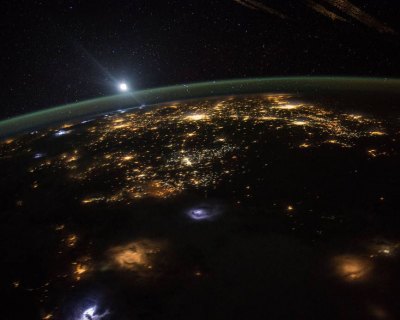Space in Brief: Cargo launch delayed

This is the second delay for the Japan Aerospace Exploration Agency launch, originally set for Aug. 16, then Aug. 17, from the Tanegashima Space Center in southern Japan. Officials held the launch both times because of a problematic weather forecast. If all goes well, the unmanned spacecraft will now arrive at the station Aug. 24. Named Kounotori, Japanese for “white stork,” it is loaded with more than 4.5 tons of supplies, including water, spare parts and experiment hardware for the six-person space station crew, according to NASA.
While routine, recent cargo deliveries have met with disaster. Another unmanned supply ship --this one operated by a private company, SpaceX -- exploded approximately two minutes after takeoff June 28. NASA lost research equipment, as well as a space suit, an International Docking Adapter and food for the crew. In April, a supply flight operated by the Russian space agency experienced trouble and never made it to the space station.
The launch is set for 7:50 a.m. Eastern time on Aug. 19. NASA Television will carry live coverage of the event beginning at 7 a.m.
STATION EXPERIENCES POWER LOSS: The International Space Station lost power briefly Aug. 11, according to NASA. The station's backup system fueled critical systems, and the power was restored quickly. Astronauts were safe.
VEGGIES IN SPACE: It was not as earth-shattering as the first step on the moon or as heart-stopping as a space walk, but when astronauts on the International Space Station recently wolfed down lettuce grown in space, it was still a first.
And in truth, the Aug. 10 meal of fresh red romaine lettuce may be just as significant. In the past, NASA and other agencies have grown plants in space, but “the results were always sent to Earth for examination, rather than eaten,” the space agency explained.
This time, the astronauts ate their vegetables – and enjoyed the meal. Beyond the photo shoot is a serious problem posed by space travel: how to feed astronauts on long voyages. When the space agency begins to launch deep-space missions, space farming will be a part of the life-support system.
Related:
Supplies for space station go up in smoke
Update: Cargo ship malfunctions
In Brief: NASA to probe rocket explosion
If you would like to comment, contact StudyHall.Rocks or like us on Facebookand tell us what you think.

